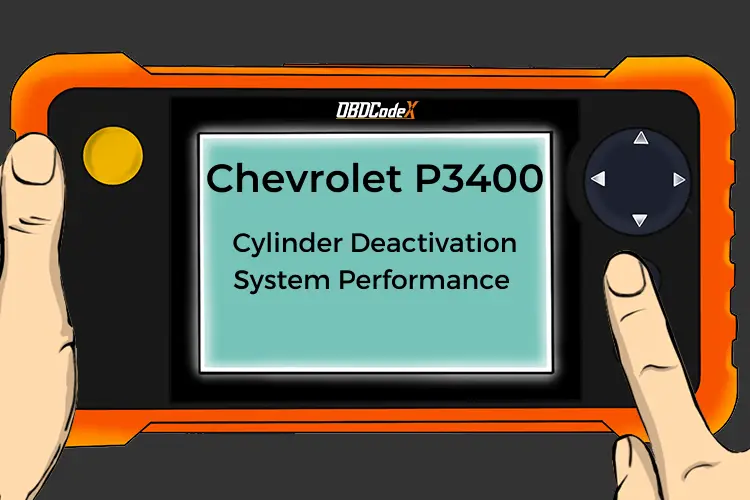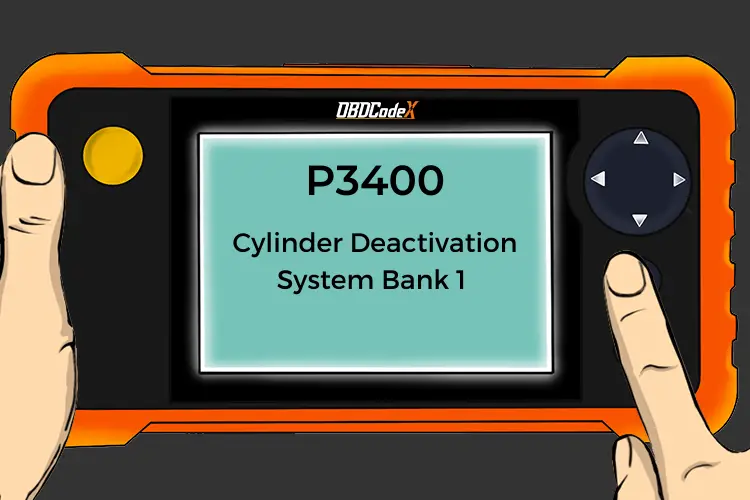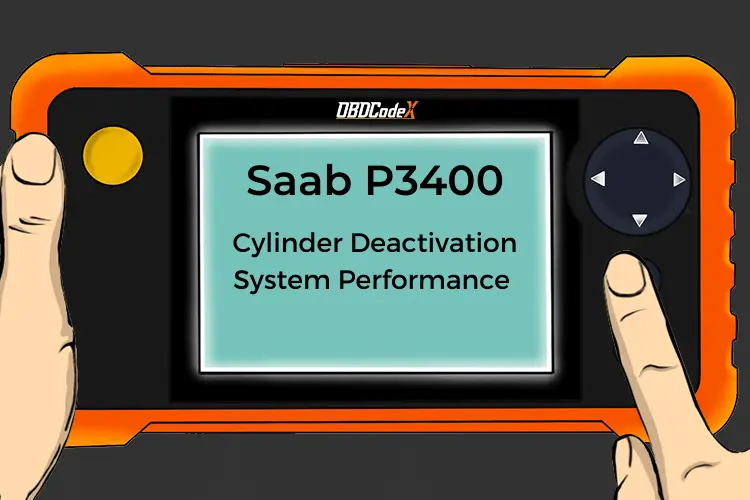P3497: Cylinder Deactivation System Bank 2
Is your scanner showing P3497?
No worries. We'll show you what it means and how to deal with it.
P3497: Cylinder Deactivation System Bank 2
OVERVIEWWhat Does The P3497 Code Mean?
A stored code P3497 means that the powertrain control module (PCM) has detected an abnormality in the cylinder deactivation system for engine bank 2. Bank two denotes the bank of the engine which doesn’t contain the #1 cylinder. The location of the number one cylinder varies by make and model. Consult your service manual (or alternate source of vehicle information) for the location of the number one cylinder for the vehicle in question – never make assumptions where this is concerned.
Cylinder deactivation (also known as variable displacement) systems are designed for fuel conservation purposes. They are primarily used in vehicles equipped with an engine that has eight or more cylinders.
Under certain driving conditions, all of the engine’s horsepower is not needed. These driving conditions typically involve low throttle and highway speeds. When these circumstances arise, the cylinder deactivation system is designed to disable corresponding cylinders and conserve fuel.
The variable valve timing solenoids are utilized to close the intake and exhaust valves for the cylinders that are deactivated. The purpose of this is twofold; first, it traps spent exhaust gases in the cylinder and forms a sort of air damper. This reduces vibration and makes cylinder deactivation operation smoother. Secondly, the trapped exhaust is compressed on the piston up stroke. The compressed exhaust serves to propel the piston back downward and provide an even greater degree of overall engine balance.
In addition to the valves being closed on the deactivated cylinders, the cylinder deactivation system also disables fuel flow to the affected cylinders. There is usually no noticeable loss of power or torque when the cylinder deactivation system becomes operational.
If a situation arises in which the PCM cannot make the cylinder deactivation system operational (for engine bank 2), or if the PCM detects that the cylinder deactivation system has become inadvertently operational, a code P3497 will be stored and a malfunction indicator lamp (MIL) may be illuminated.
What Are The Symptoms Of The P3497 Code?
Symptoms of a P3497 trouble code may include:
- Diminished fuel efficiency
- Reduced engine performance
- Other cylinder deactivation codes
- Engine misfire codes
What Are The Potential Causes Of The P3497 Code?
Causes for this code may include:
- Low engine oil level or pressure
- Defective valve timing control solenoid/s
- Open or shorted cylinder deactivation circuit/s
- Faulty PCM or PCM programming error
How Serious Is This P3497 Code?
Aside from the fact that cylinder deactivation problems may diminish fuel efficiency, the possible causes may lead to catastrophic engine failure. The P3497 should be rectified as soon as possible and classified as severe.
How Can You Fix The P3497 Code?
Note: There are known technical service bulletins (TSBs) for certain Honda & Acura vehicles that pertain to this code. They are Honda TSB 11-033, Honda TSB 13-031, and Honda TSB 13-055.
Components which are critical to the operation of the cylinder deactivation system frequently require assistance from engine oil pressure. Because of this, diagnosing any cylinder deactivation codes should begin by making sure that the engine is filled to the proper level with the appropriate oil and that engine oil pressure is within specifications. If there is doubt about actual engine oil pressure; a manual oil pressure test is in order.
In order to reach an accurate diagnosis of a code P3497, a diagnostic scanner, a digital volt/ohmmeter (DVOM), and a source of vehicle information will be required. If engine oil pressure is in question, a manual oil pressure gauge will also be necessary.
A reliable vehicle information source may yield applicable technical service bulletins (TSB) which could aid in your diagnosis. It should also provide diagnostic flow charts, wiring diagrams, connector face views, connector pin-out charts, and component testing procedures/specifications. You will need this information to arrive at a correct diagnosis.
Always disconnect controllers before testing system circuits with the DVOM. Failure to do so may result in controller damage.
Visually inspect the related connectors and wiring
Once you have made sure that engine oil pressure is within specifications and performed a visual inspection of related connectors and wiring, connect the scanner to the diagnostic port of the vehicle. Retrieve all stored codes and related freeze frame data. Writing this information down (for later) may prove helpful. Clear the codes and test-drive the vehicle until the PCM either enters readiness mode or the code is reset.
If the PCM enters readiness mode, you may assume that you are dealing with an intermittent code. The conditions which caused it may need to worsen before you can reach a successful diagnosis. If the code is reset, locate the appropriate diagnostic flow chart in the vehicle information source and follow it to conclusion.
Use the DVOM to test the individual variable valve timing solenoids. Solenoids which fail to comply with manufacturer’s specifications should be considered defective.
- Low engine oil level is the leading contributor to cylinder deactivation system codes
Recommended Parts
Below are some recommended auto parts to help you address the trouble code affecting your vehicle and get it running smoothly again:
>>> Engine Oil
>>> Camshaft Variable Valve Timing Solenoid
>>> ECU
>>> WORKPRO 582-piece Crimp Terminals, Wire Connectors, Heat Shrink Tube, Electrical Repair Kit
Note: During the purchasing process, please check carefully whether the part you want to buy fits your car!
Check This Video For Reference
Reference Sources
P3497 Cylinder Deactivation System Bank 2, OBD-Codes.



